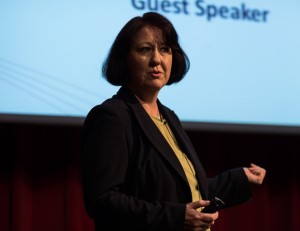 I acquired a new label recently. I was named by the Health Service Journal as one of 50 “inspirational women” in healthcare. Quite something for someone who is not in the hierarchy: a “patient” no less.
I acquired a new label recently. I was named by the Health Service Journal as one of 50 “inspirational women” in healthcare. Quite something for someone who is not in the hierarchy: a “patient” no less.
My work as a patient leader has made me aware of boxes, how we hide in them, and consign others to them. What happens when the labels on the boxes limit us and the lids are firmly closed?
I used to be defined by my job title. I had my career in international relations, and the validity and trappings that went with it. I worked in a hierarchical, highly political organisation where bullying was rife. I clung to my status like a life raft in a stormy sea, and I had a range of tactics to hide the fact that I was barely managing to keep the plates spinning. The whole lot went when I had to hand in my ID badge for my diagnosis of post-traumatic stress disorder.
Since then, I’ve had over 100 admissions to hospital, been through two residential rehabs, three day programmes, cognitive behavioural therapy, cognitive analytic therapy, dialectical behaviour therapy—I could go on and on. My collection of labels, which I’ve amassed over a decade of rattling around the revolving doors of services, include frequent flier, bed blocker, heart sink patient, and finally maelstrom of mayhem. I am particularly fond of that last one, given to me by an exasperated senior house officer. Junior doctors on zero sleep can still alliterate with the best of them.
Somehow, I dragged myself from the chasms between services, and am now devoted to putting the experiences to good use. These days my labels are different. I am fellow of the Collaboration for Leadership in Applied Health Research and Care (CLAHRC), northwest London; I am the sole “patient” on the NHS Leadership Academy; and I am often asked to talk on how to engage effectively with patients to the likes of the King’s Fund and NHS England.
My message is simple. If we feel safe enough to emerge from our boxes of “patient” or “professional,” and risk venturing into the territory where boundaries are blurred, and both sides are prepared to walk in the shoes of the other, then we have the potential to create something of real benefit. This is not about professionals having to relinquish power in an already chaotic and uncertain climate, but about strengthening the power base so there is more of it to go around.
Patient leaders are often not in the hierarchy, so we have more freedom to look outwards rather than upwards. This makes us potentially powerful allies for professionals who are struggling to challenge the status quo. To see us solely as data sets and fillers in of questionnaires is to waste a pool of resources that we can ill afford.
We need to find the courage to break down the walls of the boxes, while they are still cardboard and before fear causes them to petrify into concrete. Then we are left with defensive bunkers—the silos with which we are all too familiar, and which are so much harder to demolish.
Alison Cameron ran international development projects for 10 years, but her career was cut short when she was diagnosed with post-traumatic stress disorder after her colleagues were killed in the course of her work. She is fellow of the Collaborative for Leadership in Applied Health Research and Care (CLAHRC), northwest London, and the sole “patient” on the NHS Leadership Academy. She now works with NHS and social care organisations on how to work in genuine partnership by sharing power with those on the receiving end.
Competing interests: I declare that I have read and understood the BMJ policy on declaration of interests and I have no relevant interests to declare.
